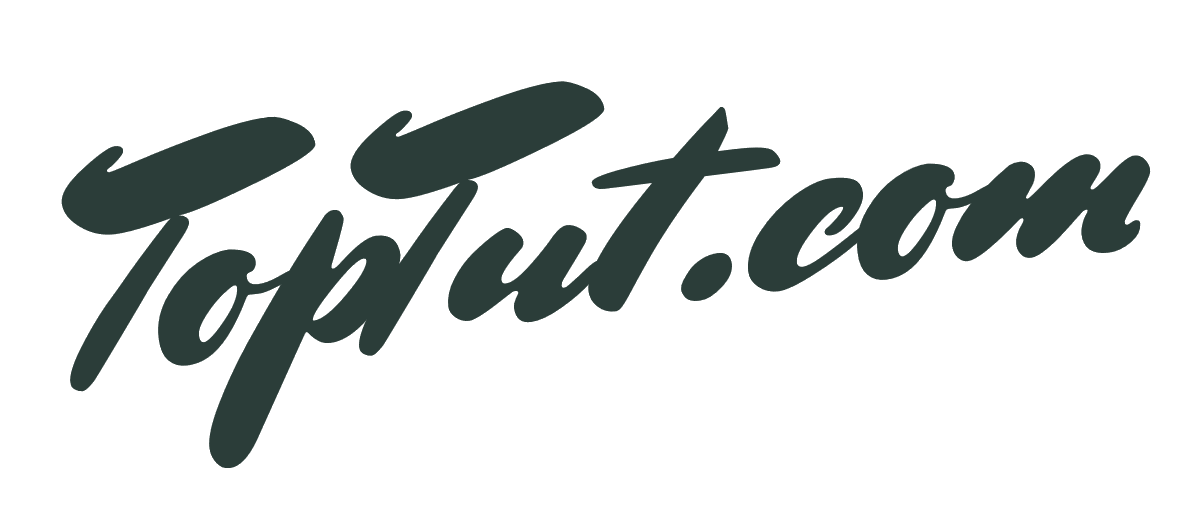Lead generation databases are becoming increasingly popular because when lead generation is done correctly can attract many potential customers (leads) to your company’s products or services. While there are several effective methods for generating leads, the quickest and most cost-effective method is using a reliable lead-generation database.
An excellent lead generation database lets users quickly access and download targeted contacts while ensuring the highest data accuracy and the most affordable pricing.
The lead generation process entails identifying, targeting, and acquiring leads based on data about your target audience such as their locations, companies, job titles, needs, and pain points.
The leads you generate will go through a sales funnel, which will help guide them to becoming customers.
It’s more important than ever for businesses to have a robust lead generation strategy. Whether you’re a startup looking for your first customers or an established business aiming to expand your reach, a lead generation database can make a big difference in your marketing efforts.
What is the process of generating leads?
Lead generation is the process of identifying new potential customers for your company. It can be daunting, particularly if you’re just starting.
A “lead” is someone who is interested in your company’s products or services. However, he or she has yet to make a purchase.
You can start generating leads when you know your ideal customer. You then begin gathering information about them using a lead generation database or/and various strategies.
With the information gathered through your chosen lead generation strategy, you can begin reaching out to prospects and learning more about their needs and preferences. The last steps are to introduce your products or services to prospects and pique their interest in what you offer.
You can begin creating content to educate leads about your products or services and position your company as an authority in the field.
Posting relevant and interesting content on social media channels and blogs on a regular basis can help you generate leads effectively.
You know, there’s one thing that’s like oxygen for any business: leads. The more quality leads you have, the better chance you have of making a sale, driving revenue, and, let’s be honest, keeping the lights on. But let’s cut through the fluff—lead generation isn’t just about getting any names on a list; it’s about getting the RIGHT names. And in 2024, you better believe the landscape has evolved. Today, I’m giving you the lowdown on the top 10 lead generation databases you should be using right now. Let’s jump in and start printing some money.
1. ZoomInfo
ZoomInfo is like the Rolls Royce of lead databases—premium, loaded with features, and, yeah, a little expensive. But in 2024, ZoomInfo still dominates because of its unmatched depth of data. With over 220 million contacts, they’re constantly feeding your pipeline with fresh, B2B insights. One crazy stat? Companies using ZoomInfo report an average of a 15% boost in sales productivity within the first 6 months.
2. UpLead
If ZoomInfo is the Rolls Royce, then UpLead is the Tesla—slick, high-performing, and not nearly as hard on your wallet. Real-time verified leads with a 95% accuracy guarantee—that’s more promise than most of your sales reps give! For those needing quality without the premium cost, UpLead is your solution.
3. Apollo.io
Talk about a rocket fuel boost for your sales. Apollo.io gives you access to over 250 million contacts—and the platform’s AI insights make segmenting, outreach, and converting as smooth as butter. The best part? They’ve integrated automation that can save you hours on mundane tasks—their users save, on average, 10 hours a week. Imagine spending that extra time actually closing deals.
4. Zeliq
Ready to supercharge your sales? ZELIQ gives your team the tools to crush it—organize leads, track performance, and automate tasks like a pro. No more chaos, just streamlined workflows and real-time insights. The best part? You get back hours in your day to focus on what matters: closing deals.
5. Hunter.io
Emails are still king. Hunter.io knows this well and zeroes in on helping you find accurate business emails—the kind that don’t bounce. They claim over 100 million email addresses in their database. Need to reach out to decision-makers with minimal guesswork? This is your guy. Plus, in 2024, Hunter is rolling out improved filters to better hone in on titles and industries.
6. Clearbit
Data enrichment—the “cherry on top” for every marketing and sales campaign. Clearbit enhances your existing lead data with detailed insights like job title, company size, tech stack, and much more. Conversion rates improve by up to 40% when marketers use enriched data compared to basic, raw leads.
7. Lead411
Accurate and sales-ready leads are Lead411’s game. They claim to have a database of 450 million contacts. Plus, the real kicker? Trigger alerts. You get notified when leads make moves—like a new funding round or a CEO change. Being able to time your outreach just right has been shown to improve conversion rates by 391%! Yeah, that’s not a typo.
8. Aeroleads
Aeroleads might not have the biggest database, but their integrations make up for it. Seamlessly work with tools like LinkedIn, Salesforce, and more. In 2024, integrations matter—sales teams that integrate their CRM with lead databases report a 20% improvement in sales cycle efficiency. It’s like having a lead-capturing magic wand.
9. SalesIntel
In a sea of data, human verification still holds value. SalesIntel relies on a massive team of researchers to verify their data—which means fewer dud contacts and more accurate targeting. Their promise? 95% accuracy on B2B contacts. It’s a “set it and forget it” lead provider with enough muscle to get you results.
10. Adapt.io
Last, but definitely not least, Adapt.io is all about affordability. The lead game can be expensive, but Adapt gives you millions of contacts without taking a sledgehammer to your marketing budget. Their AI-driven segmentation helps turn basic leads into highly targeted prospects. Not to mention, their customer base is seeing 3X better response rates than cold lists.
Why Choosing the Right Lead Provider Matters in 2024
Here’s a reality check: not all lead databases are created equal. A good database should make your salespeople salivate—pumped up with verified, fresh, and targeted information. Statistics show that companies that properly implement lead generation databases in their process see an increase in qualified leads by up to 60%. That’s too big to ignore.
This year, it’s all about working smarter, not harder. AI-enhanced databases, real-time verifications, and enriched data aren’t just fancy terms—they’re the backbone of a winning lead-gen strategy. You’ve got 10 providers that are crushing it, each with unique strengths.
Take Action
Don’t just sit back and read—pick one that fits your style and start filling up that pipeline. Because at the end of the day, leads don’t turn into sales unless you work them. And let’s face it, you’re here to work smarter and generate some serious returns.
A lead generation database
A lead generation database can be as simple as a list of people you believe might be interested in what you’re selling or as sophisticated as software that has extensive research to make acquiring excellent prospects and leads easier.
A lead generation database’s information can vary. However, it usually includes contact information such as phone numbers, email addresses, and industry-specific information.
A good lead generation database as a service or software can provide many advantages to your company, such as excellent support, refund policies, free trials, and so on.
What should a perfect lead generation database look like?
A lead generation database, which is a list of people who want to do business with you, can contain various information.
Contact information (name, email address, phone number), Demographics (age, job title, location), Industry context (company size and industry), and Firmographics (company size and industry) are all included.
Ideal lists contain the most qualified prospects and leads. It means that the leads on the lists will have met at least three criteria:
- They are interested in what you’re selling (or will be soon).
- Prospects who can afford your product or service
- They are also easily accessible.
An ideal lead gen database will ensure that its users have easy access to millions of valid prospects or leads and accurate information about them. The software must also provide a risk-free experience and excellent client support.
The best lead generation databases
The advantages of using a dependable lead generation database are substantial. It enables your company to reach out directly to the appropriate audience.
The database contains accurate information that lets you learn about your prospects and whether or not they are interested in what you offer.
However, not everyone on the Internet is a useful lead database. In fact, there are many bad data providers out there who will take your money and give you headaches. What are the best lead generation databases to use?
What is a Lead Generation Database?
A lead generation database is a collection of potential customer information that your business can use to convert these leads into actual sales. These databases often contain vital contact information such as names, email addresses, and phone numbers.
With these details, you can create targeted marketing campaigns that directly address your prospects’ needs and interests.
Why Use a Lead Generation Database?
The better question might be, “Why not?”
With a high-quality lead generation database, you’ll save time and resources you’d otherwise spend hunting down potential leads. Instead of throwing your marketing efforts into the void, you’ll be able to focus on prospects genuinely interested in what you offer.
Think of it as trying to find a needle in a haystack. Without a lead generation database, you’re just rummaging blindly. But with one, you’ve got a high-powered magnet to pull the needle right to you. Now, isn’t that a ‘magnetic’ solution to your problem?
10 Best Leads Providers in 2023
There’s no shortage of lead generation providers, but as with anything else, not all are created equal. Let’s take a look at the top five lead providers that are leading the game in 2023.
Here are some of our favorites:
- Leadfeeder
- HubSpot Marketing
- LinkedIn Sales Navigator
- DiscoverOrg
- Leadspace
- ZoomInfo
- InsideView
- UpLead
- D&B Hoovers
- Clearbit
Your Path to Efficient Lead Generation in 2023
The world of lead generation is vast and can be overwhelming, especially with the sheer number of databases available. But fear not, as with the 10 top-notch lead generation databases outlined in this post, you’re well-equipped to make an informed choice.
Remember, the perfect lead generation provider doesn’t exist—it all boils down to what works best for your unique business needs. Assess each provider based on their features, data accuracy, ease of use, customer service, and of course, your budget.
Opting for the right lead generation database is the first step toward achieving exponential business growth. It’s like having a reliable compass in the often confusing wilderness of the marketing landscape, guiding you toward potential customers waiting to be discovered.
As you set out on your lead generation quest in 2023, remember to keep your business goals in sight and stay agile to adapt to the dynamic market trends. Remember, it’s not about the number of leads, but the quality and relevance that truly counts.
So here’s to streamline your marketing efforts and turn leads into loyal customers. Here’s to a prosperous 2023!
Conclusion: Choose the Best Lead Generation Provider for Your Business
When it comes to choosing a lead generation provider, there’s no one-size-fits-all answer. The best provider for you depends on your specific needs, goals, and budget. So why wait? It’s high time you took a ‘lead’ in your marketing efforts. Get it, ‘lead’? Alright, I’ll stick to giving advice on lead generation!




